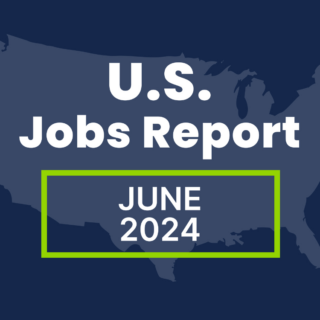One of the earliest and most important steps in the internal mobility process is identifying which employees within your organization should be targeted for internal roles based on skills, experience and willingness to explore new career paths. But, how can you be sure you know the full extent of the skills available within your organization?
An internal mobility skills audit enables you to understand where employee skills lie, as well as direct your employees’ training and development plans and your overall recruitment strategy.
What is an internal mobility skills audit?
An internal mobility skills audit is the process of assessing your employees’ skills and then identifying potential internal candidates for open positions based on knowledge, experience, skill sets and flexibility. By assessing the knowledge and skills that already exist within your workforce, you can help develop the careers of existing employees while simultaneously improving your retention rates and filling open roles faster.
Common employee skills include:
- Technology and digital skills
- Research skills
- Quantitative skills
- Critical thinking skills
- Analytical skills
- Soft skills like emotional intelligence
- Project management
- Business acumen
- Project management
- Teamwork
Who is responsible for the internal mobility audit?
When it comes to an individual employee who is a candidate for an internal role, team leaders or managers should be responsible for conducting the audit of that employees’ skills. However, larger team analysis for multiple roles is usually done by team leaders, HR or external talent advisors.
Data Collection & Analysis
The goal of data collection and analysis in an internal mobility skills audit is three-fold: 1) to analyze which roles are open now; 2) to rate how important each role is; and 3) to inquire about the skills required to perform the role properly. Data collection and analysis activities can include:
Developing job profiles and identifying critical skills needed for each job role:
- Review current job descriptions as a reference for the skills that are needed.
- Consider the effect of upcoming organizational changes or future work trends (such as remote work) on the role.
- Develop a list of competencies that most clearly and accurately describe what is necessary to do the work.
Conducting an inventory of your employees’ current skills:
- Position descriptions
- Job class specifications
- Performance evaluations and employee assessments
- Interviews/focus group meetings with supervisors, managers and employees
- Self-assessment surveys
As you might expect, it can quickly become difficult to manually keep track of each employee’s competencies and skill levels. Fortunately, talent technology can help you with the data collection process. For example, PeopleScout’s Affinix Internal Mobility can help you access an internal talent pool all in one place so you can quickly source, leverage, promote and reassign talent from within your organization.
Assessing Internal Candidates
Once internal candidates for open positions have been identified, it’s time for your teams to dive deeper and examine a candidate’s knowledge, skills and abilities (KSAs). While the three terms may seem interchangeable, they are actually distinctly different dimensions of a potential internal candidates’ qualifications:
- Knowledge focuses on the candidate’s understanding of key theoretical concepts important to the role.
- Skills are the capabilities or hands-on experience needed for the application of theoretical knowledge important for the role.
- Abilities are the innate traits or talents that a person brings to the role if selected as a successor.
KSAs are the core competencies used when assessing talent and can create a better picture of a potential candidate’s strengths and weaknesses. These are useful in creating your organization’s internal promotion and talent development programs, and it’s essential to develop a KSA profile of each internal candidate to determine whether their attributes align well with a specific role.
To begin, your internal mobility team can start building KSA profiles by asking these questions:
- Where does your organization see the role evolving in the next three to five years? What skillsets will be required to evolve with the role?
- What unique or specialized competencies are necessary to succeed in the role?
- What qualities should the internal candidate possesses in order to thrive in the role and meet your organization’s business objectives?
Then, when identifying individual employees as potential internal candidates, consider assessing the following traits:
- Flexibility and willingness to change roles or work environments
- Interest in professional development, taking on new projects outside of their duties and learning new skills
- Good communicators who work well with multiple teams and departments
When completed, the results of a skills audit should be aggregated into a report to obtain a clear view of existing skills and knowledge within your organization. The information you collect during the audit can then be used to support more than just your internal mobility program. It can also be applied to organizational restructuring and internal promotion, as well as help conduct effective succession planning.



